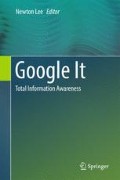Abstract
Transhumanism established a set of values conveying emerging technology and humanity in three essential areas: critical thinking, visionary narratives, and technological innovation. The philosophy established values, goals, and principles that synthesize epistemological and metaphysical views. Its roots stem from historical systems of thinking that form social and cultural attitudes. For example, the diversity of global culture, human rights, the economics of techno production and supply, the ecology of well-being, the development of human enhancement interventions, radical life extension, and the politics of laws and policy-making. This synergistic approach brought greater insight into assessing the challenges and conflicts we face and how to build practical and applied solutions. The expression of transhumanist thinking is practical optimism.
Access this chapter
Tax calculation will be finalised at checkout
Purchases are for personal use only
References
Max More authored the “Philosophy of Transhumanism” in 1990. A detailed essay on transhumanism’s beginnings, see The Transhumanist Reader: Classical and Contemporary Essays on the Science, Technology, and Philosophy of the Human Future (Wiley-Blackwell).
“It is often confused with, compared to, and even equated with posthumanism. Transhumanism arrived during what is often referred to as the postmodernist era, although it has only a modest overlap with postmodernism. Ironically, transhumanism shares some postmodernist values, such as a need for change, reevaluating knowledge, recognition of multiple identities, and opposition to sharp classifications of what humans and humanity ought to be. Nevertheless, transhumanism does not throw out the entirety of the past because of a few mistaken ideas. Humanism and scientific knowledge have proven their quality and value. In this way, transhumanism seeks a transmodernity or hypermodernism rather than arguing explicitly against modernism. One aspect of transhumanism that we hope to explore and elucidate throughout this book is the need for inclusivity, plurality, and continuous questioning of our knowledge, as we are a species and a society that is forever changing. The roots and core themes of transhumanism address some of the underlying themes that have formed its philosophical outlook” (More and Vita-More, 2012).
The Journal of Transhumanist Thought started out in a more casual formatting in the magazine Extropy: Vaccine for Future Shock.
Extropy refers to a systems intelligence, order, vitality and capacity and drive for improvement.
The transhumanist conferences can be found in the Extropy digital reference center located at http://www.extropy.org
Humanity+ is a 501c3 nonprofit organization. It was originally incorporated as World Transhumanist Association in 1989 and rebranded its name in 2008. Humanity+ and its Board of Directors and Advisors unify the pioneering transhumanist Extropy Institute and WTA.
Metanexus Institute Publisher. http://www.amazon.com/Transhumanism-Critics-Gregory-R-Hansell/dp/1456815652#reader_1456815652
Special Issue on Transhumanism (2008) In The Global Spiral, (Guest Editor, Hava Tirosh-Samuelson), Vol. 6, Issue 3. Available http://www.metanexus.net/magazine/PastIssues/tabid/126/Default.aspx?PageContentID=27
Fedorov, Nicolai. (1990) What Was Man Created for? Hyperion Books.
Finot, Jean. (2009) (Trans. Roberts, Harry) The Philosophy of Long Life. Whitefish, MT: Kissinger Publishing, LLC. Originally published London: John Lane, The Bodley Head in 1909, pp. v, 83, 270.
Dante, Alighieri. (1308–1321) The Divine Comedy (The Inferno, The Purgatorio, and The Paradiso) (Ed. Ciardi, J.) New York: NAL Trade, 2003. (p. 586-589).
Eliot, T.S. (1952) Complete Poems and Plays: 1909-1950. The Cocktail Party. New York: Harcourt. (p. 147).
Sarkar, Subhas (2006) T.S. Eliot: The Dramatist. Atlantic Publishers. (p., 192).
Huxley, Julian. (1957) “Transhumanism” in New Bottles for New Wine: Essays. London: Chatto & Windus.
De Chardin, Teilhard. (1959) The Future of Man. First Image Books Edition (2004).
Maslow, Abraham. (1962) Toward a Psychology of Being. (2nd. Ed. 1968, New York: John Wiley & Sons (p x1).
The Reader’s Digest Great Encyclopedia Dictionary. (1966). Reader’s Digest.
FM-Esfandiary (1972) “Transhumans 2000” in Tripp, M., Woman, Year 2000. New York: Arbor House.
FM-2030 (1989) Are You a Transhuman? Monitoring and Stimulating Your Personal Rate of Growth in a Rapidly Changing World. Viking Adult.
Broderick. D. (1982) The Judas Mandala. New York: Pocket.
Vita-More, N. (1983) Transhuman Statement in Create/Recreate. Available: http://www.transhumanist.biz/createrecreate.htm http://www.natasha.cc/transhuman.htm
Ettinger, R. (1989) Prologue: The Transhuman Condition” in Man into Superman. Prologue (1972). New York: Avon.
Webster’s New Universal Unabridged Dictionary. (1983) Fromm Intl.
In my Doctorate Dissertation, I explain the difference: “One outcome of the integration and interaction where the human body and its biology with machines was consequential in bringing about the concept of the cyborg (Clynes 1960:27). Rather than being positioned as an endpoint to the integration of human, machine, and computer, the alternative strategy proposed in the thesis focuses on the [transhuman] platform diverse body (substrate autonomous person; i.e., transhuman) because, unlike the cyborg, it steers its own transformative evolution in becoming posthuman.” (Vita-More, 2012).
Producer and Host, Natasha Vita-More, aired from 1986 – 1994, located in Santa Monica, California at CityTV programming.
Green Party.
Esfandiary, FM. (1977) Up-Wingers: A Futurist Manifesto. New York: Popular Library, CBS Publications, (pp 21-25).
The 2004 Vital Progress Summit presented 2-week virtual discussion and debate on President Bush’s Bioethics Council’s ultraconservative Beyond Therapy report. Summit keynotes addressed the use of the well-known “Precautionary Principle” by anti-biotech activists as a rallying tool to turn people against the science, medicine and biotechnology that could cure disease and improve life. Summit keynotes: Ronald Bailey, Aubrey de Grey, Raymond Kurzweil, Max More, Marvin Minsky, Christine Peterson, Michael Shapiro, Lee Silver, Gregory Stock, Natasha Vita-More, Roy Walford, and Michael West.
AESCHYLUS’ “PROMETHEUS BOUND” Translated 2006 by G. Theodoridis. See http://www.poetryintranslation.com/PITBR/Greek/Prometheus.htm Downloaded April 5, 2011.
Author information
Authors and Affiliations
Corresponding author
Editor information
Editors and Affiliations
Rights and permissions
Copyright information
© 2016 Springer Science+Business Media New York
About this chapter
Cite this chapter
Vita-More, N. (2016). Transhumanism: The Growing Worldview. In: Lee, N. (eds) Google It. Springer, New York, NY. https://doi.org/10.1007/978-1-4939-6415-4_27
Download citation
DOI: https://doi.org/10.1007/978-1-4939-6415-4_27
Published:
Publisher Name: Springer, New York, NY
Print ISBN: 978-1-4939-6413-0
Online ISBN: 978-1-4939-6415-4
eBook Packages: Computer ScienceComputer Science (R0)

